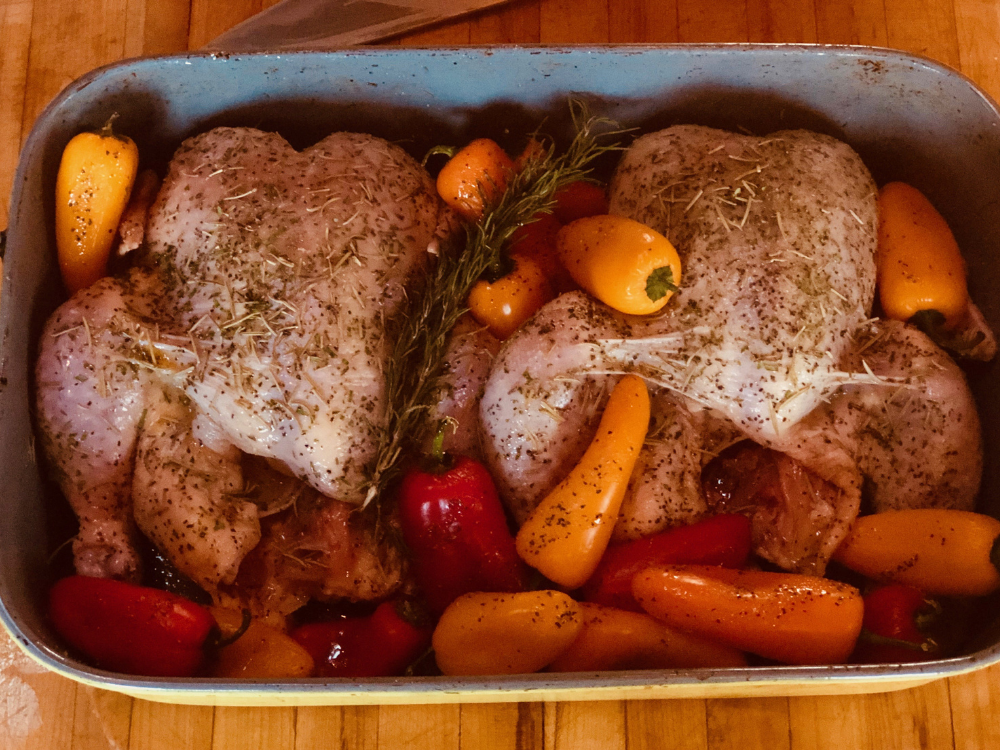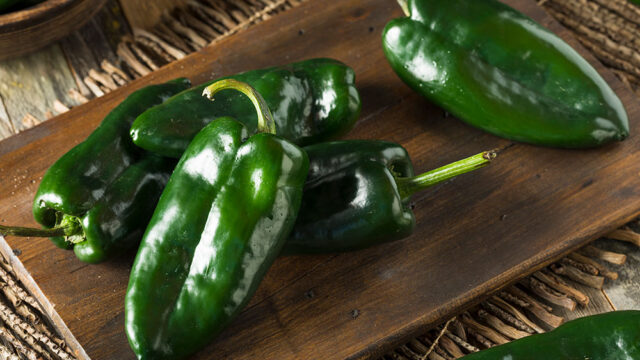While multitasking is supposed to be bad for one’s brain and overall psyche, I still am a big-time believer in its virtues for the tummy. Take Roast Chicken. In a matter of just one or two extra minutes, you can triple your meal opportunities. Here’s how my poultry multitasking mind and math work: roast two chickens rather than just one, and you then have enough leftovers to make Chicken Salad and also Garlicky Chicken Noodle Soup. To make extra (and I always am guilty of making extra), means you can gift those elder and quarantined neighbors with nourishment and leave a little love note. Here’s our family’s Classic Roast Chicken recipe which means we surround the chickens (plural on purpose) with some combo of vegetables, always tossed with olive oil, salt, and herb of choice. Multitasking for your tummy, and perhaps others tummies is what we all must now do in these tenuous times.
INGREDIENTS:
- 2 each Whole Fryer Chickens
- ½ cup extra-virgin olive oil
- 4 tbsp sea salt
- To taste black pepper
- 2 each large yellow or white onions, peeled and sliced into ½-inch wide wedges
- 2 tablespoons combined dried tarragon, rosemary, and thyme
- 1 fresh lemon, halved
- 1 1/2 cups chicken stock
Variations of Vegetables to Roast:
- Quartered New Potatoes, Yukon Gold or Finger Potatoes with chopped leeks or garlic
- Chunks of Butternut Squash or other winter squash with Yellow or Red Onion cut wedges
- Peeled carrots and parsnips cut into halves or thirds with chopped leeks or onions
- Eggplant and bell peppers and onion, cut into 1 to 11/2-inch pieces
- Mushrooms, quartered, with sliced parsnips and carrots, and garlic
PRO-TIP: toss any of the above combinations with olive oil, salt, and pepper and choose a culinary herb or spice to complement. For example, the winter squash with onions is delicious with cumin and smoked paprika. Trust your palette’s instincts. Have fun. It’s your kitchen.
DIRECTIONS:
- Pre-heat oven 450 degrees. Rinse both chickens externally and in cavities. Pat dry.
- Now, you are going to need to get personal with these birds, and that means massaging them. Yes. This is the tip I learned from Chef Martin Yan years ago. It works. First, salt and pepper the cavities of your chickens. Then, pour olive oil into your hands and then rub the entire chicken, concentrating particularly on the breasts. Now, shake generous amounts of salt evenly as you can on all skin and in the cavity. You’ll use about 2 tablespoons per bird. Try to create an even coating of the salt. Sprinkle black pepper evenly on all chicken skin. Sprinkle the herb mix on the skin and into the cavity.
- Place 3 or 4 cut onion wedges in the cavity. Squeeze the juice of half a lemon into each chicken’s cavity and place that squeezed half-lemon inside, as well. (This creates aromatics that will infuse into your yummiest chicken meat).
- Place both prepared whole birds into a roasting pan. No need for fancy grates.
- Arrange your pre-tossed vegetables with olive oil, salt, and herb around the base of each bird.
- Roast the birds at 450 degrees for 25 minutes, then decrease the heat to 375 for 50 minutes to one hour.
- Thirty minutes before your bird is done in the oven, add the chicken stock to the pan.
- You’ll know your birds are done when the skin is golden and crisp but the legs wiggle easily. Experts say the perfect temperature for a fully cooked chicken is 165 degrees. Wiggly leg test works for me.
- Remove from oven and allow the roasted chickens to rest for approximately 5 to 8 minutes before carving and serving. This technique allows the juices to naturally well up in the roasted chicken meat.
COMFORT KITCHEN TIPS:
- Eat one bird the first evening and save the other for future meals
- Save the bones from your entrée chicken – freeze with your vegetable scraps for making stock later
- There’s flavor in the bottom of that roasting pan that just looks like a greasy mess to you. You can make gravy from those drippings including all the profoundly flavorful brown bits adhering to the bottom of the pan, or save them in a container in your fridge for future cooking. Think biscuits and gravy.


